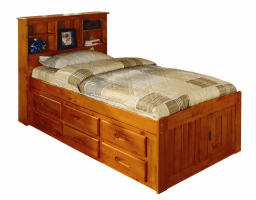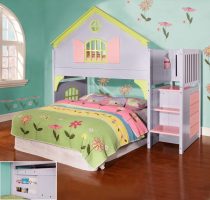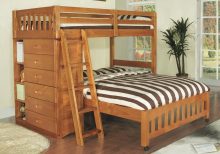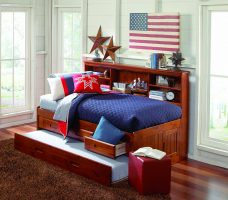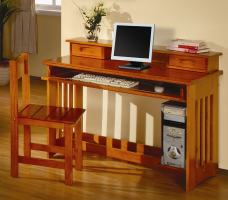Furniture for Siblings: Sharing a Kids’ Room in Harmony
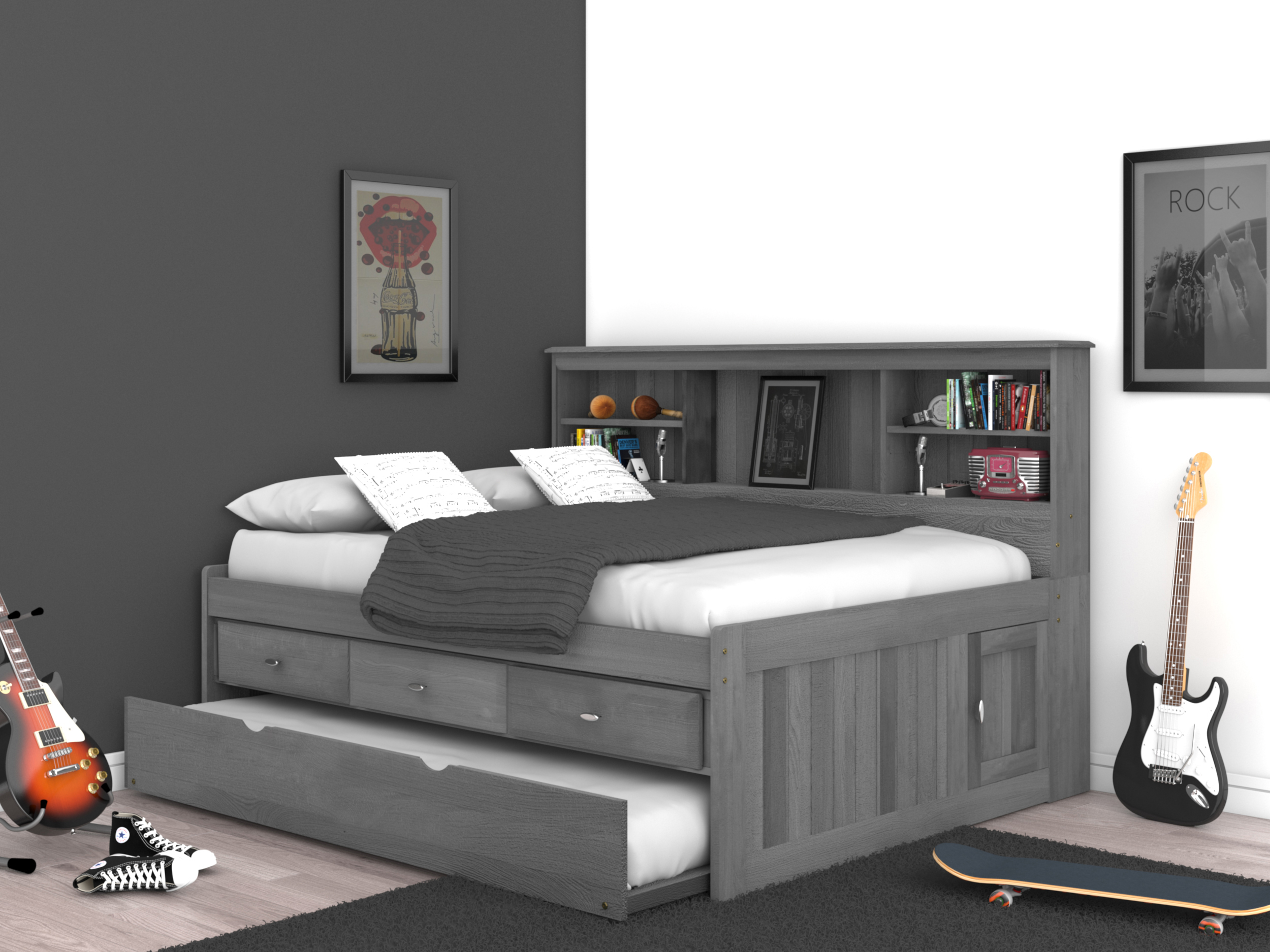
Sharing a bedroom with a sibling can be a rewarding experience that fosters bonds and teaches valuable life skills. However, it can also be a challenge when it comes to designing a space that accommodates both individuals’ needs and preferences. In this article, we’ll explore the art of selecting furniture for siblings who share a kids’ room, ensuring that harmony and personal space coexist.
The Joy and Challenges of Shared Spaces
Shared bedrooms offer siblings a unique opportunity to learn cooperation, compromise, and empathy. They can share secrets, create memories, and develop strong bonds that last a lifetime. However, designing a room that suits the tastes and needs of two or more children can be a delicate balancing act.
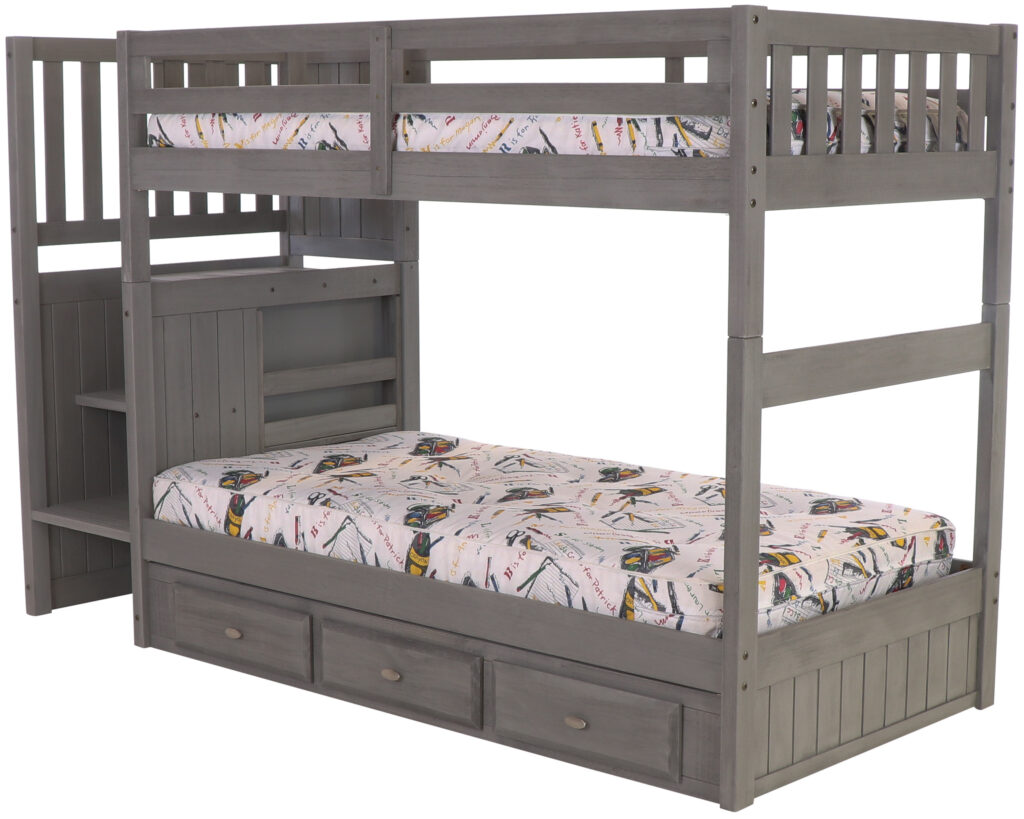
Consider the following aspects of shared bedrooms:
Age Difference: Siblings with a significant age gap may have varying interests, sleep schedules, and storage needs.
Personal Space: Children, like adults, require personal space to unwind, read, or play independently.
Privacy: Older children may crave privacy, while younger ones may seek constant interaction and supervision.
Shared Activities: Shared spaces should encourage collaboration and shared activities, promoting a sense of togetherness.
Organization: Effective storage solutions are essential for shared bedrooms to avoid clutter and confusion.
Selecting Furniture for Shared Bedrooms
Bunk Beds: Bunk beds are a classic choice for shared rooms. They maximize floor space and provide each child with their own designated sleeping area. Consider a detachable bunk bed if the children have an age gap, as it can be separated into two regular beds when needed.
Trundle Beds: Trundle beds are an excellent solution for rooms where space is limited. The lower trundle bed can be tucked away during the day and pulled out for nighttime use, accommodating both children comfortably.
Loft Beds: Loft beds are ideal for rooms with high ceilings. They create additional floor space underneath for desks, play areas, or storage, allowing each child to have their dedicated space.
Separate Beds: If the room size allows, placing separate beds against different walls can provide each child with a sense of individual space. You can create a visual divider between the beds with curtains or room dividers.
Storage Beds: Beds with built-in storage drawers or shelves underneath offer valuable storage space for each child’s belongings. This helps keep the room organized.
Desks and Study Areas: If your children are of school age, it’s essential to provide them with individual desks or study areas. Each child can have their workspace for homework and creative endeavors.
Closet Organizers: Efficient closet organizers can ensure that each child’s clothing and belongings have designated spaces. This helps avoid confusion and promotes organization.
Multipurpose Furniture: Choose multipurpose furniture like storage ottomans or benches that can serve as both seating and hidden storage. This maximizes space utilization.
Wall-Mounted Shelves: Install wall-mounted shelves at various heights to give each child their own display and storage space. This encourages them to personalize their areas.
Customizable Furniture: Consider furniture that can be customized to suit each child’s preferences, such as modular shelving units or adjustable desks.

Harmonizing the Décor
Color Scheme: Choose a neutral or complementary color scheme that appeals to both children. You can then let them select their preferred accent colors for bedding, décor, and personal items.
Personalization: Encourage each child to personalize their space with wall art, posters, or decor items that reflect their interests and personalities.
Shared Décor: Select shared décor elements that represent both children’s interests. For instance, if one child loves space and the other adores animals, opt for a celestial-themed and animal-themed décor.
Organization: Teach your children the importance of organization and tidiness. Provide labeled storage bins and baskets to keep their belongings separate but accessible.
Quiet Corners: Designate quiet corners or reading nooks within the room where each child can retreat for some alone time or engage in solitary activities.
Respect Individuality: Respect each child’s individuality and encourage them to communicate their needs and preferences for their space. This fosters a sense of ownership.
Balancing Privacy and Togetherness
Shared bedrooms offer an opportunity to teach children valuable life skills like communication, compromise, and empathy. Here’s how to strike the right balance between privacy and togetherness:
House Rules: Establish house rules that respect each child’s need for privacy and space. For instance, set boundaries regarding entry into each other’s personal zones.
Shared Activities: Encourage shared activities and bonding experiences. Plan family activities or movie nights in the shared space to foster togetherness.
Respect Quiet Time: Teach children to respect each other’s need for quiet time or solitude. If one child wants to read or play quietly, the other should learn not to disrupt.
Conflict Resolution: Help children develop conflict resolution skills. Teach them to communicate their feelings and needs effectively and find mutually beneficial solutions.
Designing a shared kids’ room with furniture that accommodates both siblings’ needs is a rewarding endeavor. It not only saves space but also fosters valuable life skills like cooperation, compromise, and empathy. By selecting the right furniture, harmonizing the décor, and balancing privacy and togetherness, you can create a shared bedroom where both siblings thrive, learn, and build lasting bonds.

